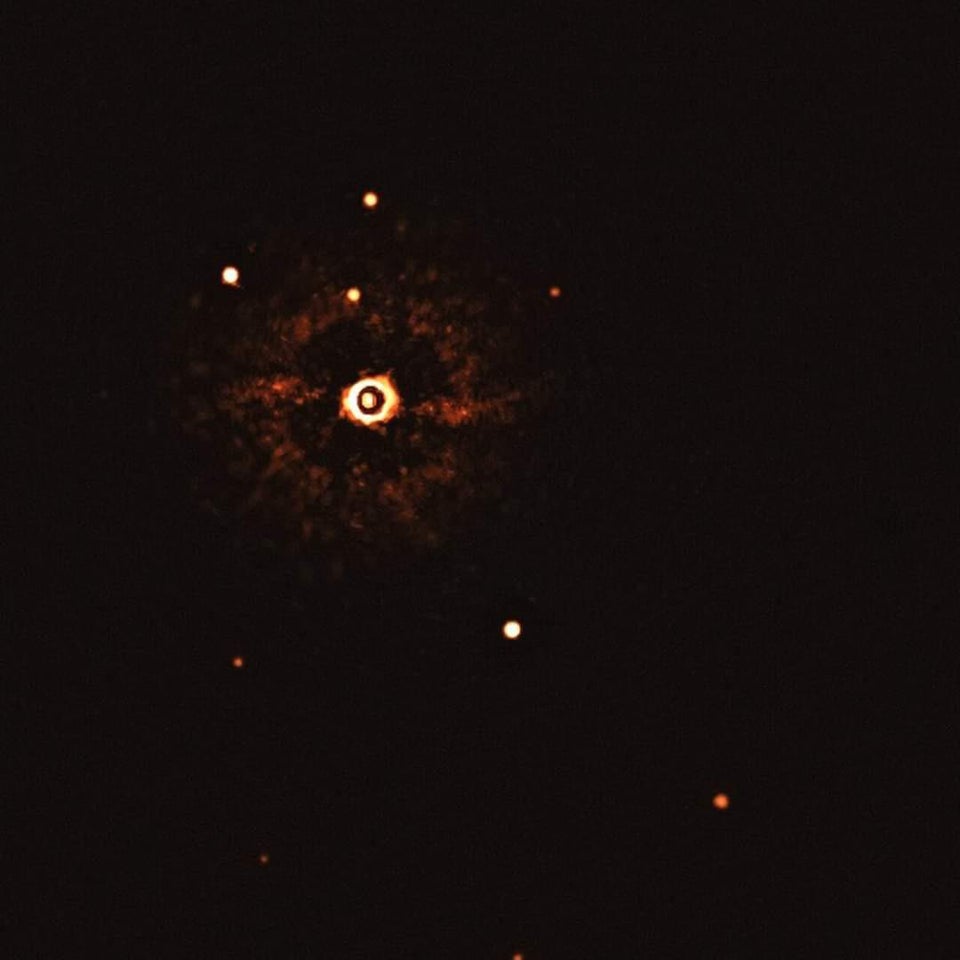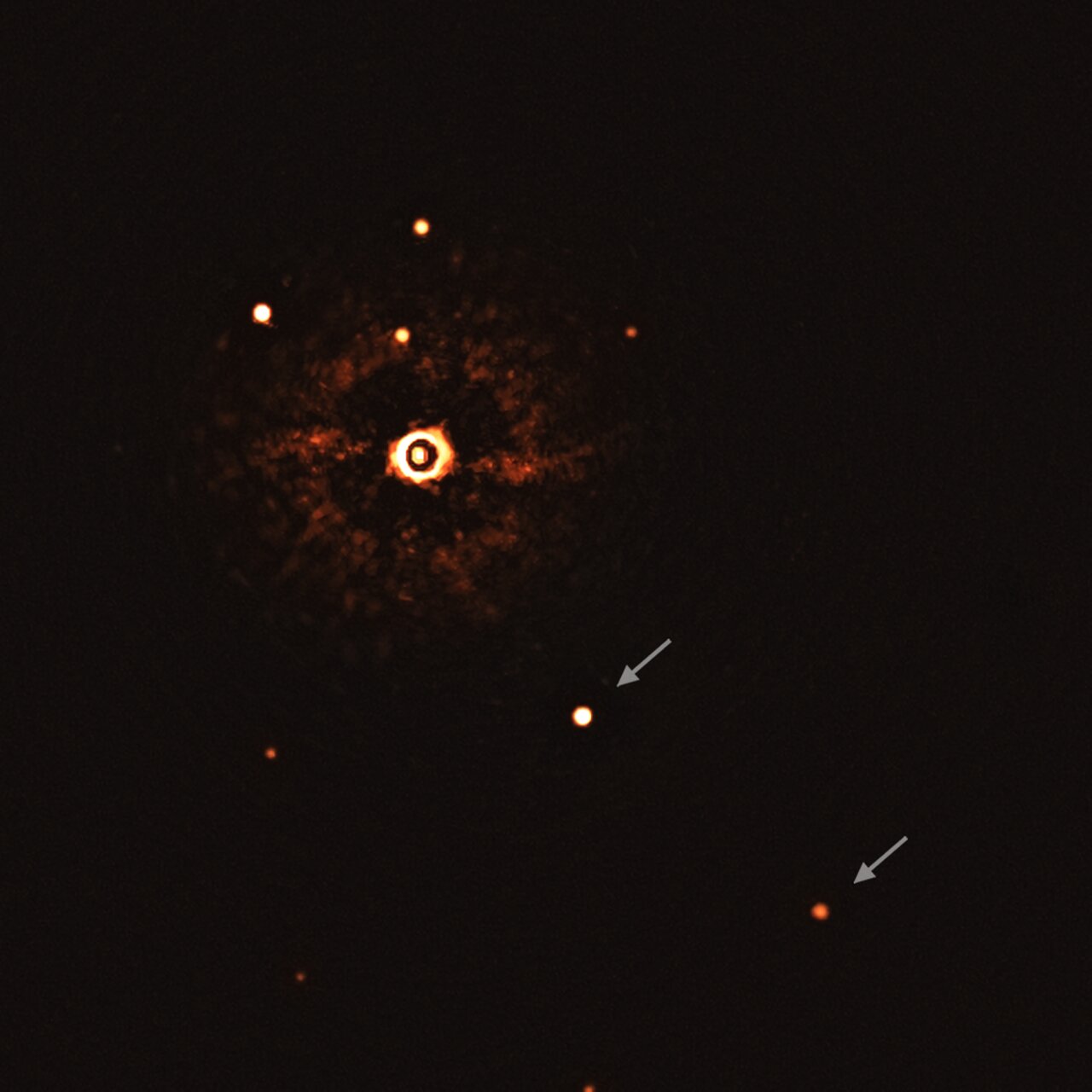It looks like you're using an Ad Blocker.
Please white-list or disable AboveTopSecret.com in your ad-blocking tool.
Thank you.
Some features of ATS will be disabled while you continue to use an ad-blocker.
17
share:
First direct image of an extra solar system taken from the Very Large Telescope in Chile
More to follow at first glance, looks like a huge devil's eye...but it is extremely late or early

Not finding any verification though still searching
More to follow at first glance, looks like a huge devil's eye...but it is extremely late or early

Not finding any verification though still searching
edit on 8-10-2021 by putnam6 because: (no reason given)
originally posted by: jerich0
a reply to: putnam6
Is there a link I can read more? That looks ominous, almost sinister.
I pilled it from Reddit but when I search extra solar system nothing in the news but the Reddit link. Still searching cause I want to read about it too
so far
astronomy.com...
and
[url]https://joshuastarlight.wordpress.com/2021/10/07/first-direct-image-of-an-extra-solar-solar-system-taken-from-the-very-large-telescope-in-chile/[ /url]
edit on 8-10-2021 by putnam6 because: (no reason given)
This is cool. Thanks for bringing the update, OP. Remember reading about it last year and was in the Astro Journal..
Latest link I can see is this one:
First solar system imaged outside our own.
Latest link I can see is this one:
First solar system imaged outside our own.
a reply to: putnam6
Article from July 2020.
www.voanews.com...
Article from July 2020.
European Telescope Takes First Picture of Another Solar System.
www.voanews.com...
originally posted by: charlyv
This is cool. Thanks for bringing the update, OP. Remember reading about it last year and was in the Astro Journal..
Latest link I can see is this one:
First solar system imaged outside our own.
Yep was about to add it's a year old, odd that I missed this though. Guess there was a lot of stuff going down in July
www.voanews.com...
a reply to: putnam6
View of the orbit of two exoplanets around TYC 8998-760-1
www.sciencealert.com...
Just over 300 light-years away is a star that's a lot like a very young version of our Sun, with multiple exoplanets orbiting it. That's an interesting find in itself. But what makes the system truly dazzling is that it just became the first of its kind to be directly imaged, planets and all.
To date, only a few tens of exoplanets have been directly imaged, and only two other multi-planet systems - both around stars very different from the Sun.
But last year, using direct imaging, a team of astronomers led by Alexander Bohn of Leiden University in the Netherlands found an unusual planet orbiting TYC 8998-760-1.
It was a gas giant around 14 times the mass of Jupiter, orbiting the star at a distance of around 160 astronomical units. To put that in perspective, Pluto orbits the Sun at an average distance of 39 astronomical units.
View of the orbit of two exoplanets around TYC 8998-760-1
www.sciencealert.com...
edit on 10/8/21 by BrokenCircles because: (no reason given)
Look at the relative distances to the supposed central sun. If you measure, the closest planet is 2 '"sun" diameters to the sun in this photo.
Mercury for example, the closest planet to our sun, is 37 sun diameters away. If it is a solar system it is very compact, and I am not sure that would
be possible..
Those are not all planets, impossible
Both in terms of orbit and luminosity
Both in terms of orbit and luminosity
a reply to: cooperton
a reply to: Jubei42
I think you both are commenting without knowing enough about the image.
Not that I have all the answers, but I doubt the image of the star shows the actual diamater of the star, since the imager used can image a star's corona which is larger than the star itself. So my guess is the actual diameter of the star itself (without the corona) may be considerably smaller than what's seen in the image, though exactly how much smaller, I don't know. The text at the link I cited below mentions some optical artifacts (the light and dark rings around the star), which I suspect make the star appear larger than it is.
An ordimary photograph might indeed show the star as brighter and the planets as dimmer, but the imager used a coronagraph which blocks light from the star itself (not the star's corona), so that probably explains why the luminosity difference isn't as great as you might expect.
Also, cooperton I think you do not even know what is in the image. It's a 2-D represenbtation of 3-D space so some of the things in the image are close to each other, others are far away in distance or depth. There are two large planets with arrows pointing to them as seen in the image below; the other lights around the central star are distant stars, not planets (Note to putnam6, this is why you should wait until you have a decent link before posting such an image, since the image without proper context may be difficult to interpret).
First ever image of a multi-planet system around a Sun-like star (uncropped, with annotations)

a reply to: Jubei42
I think you both are commenting without knowing enough about the image.
Not that I have all the answers, but I doubt the image of the star shows the actual diamater of the star, since the imager used can image a star's corona which is larger than the star itself. So my guess is the actual diameter of the star itself (without the corona) may be considerably smaller than what's seen in the image, though exactly how much smaller, I don't know. The text at the link I cited below mentions some optical artifacts (the light and dark rings around the star), which I suspect make the star appear larger than it is.
An ordimary photograph might indeed show the star as brighter and the planets as dimmer, but the imager used a coronagraph which blocks light from the star itself (not the star's corona), so that probably explains why the luminosity difference isn't as great as you might expect.
Also, cooperton I think you do not even know what is in the image. It's a 2-D represenbtation of 3-D space so some of the things in the image are close to each other, others are far away in distance or depth. There are two large planets with arrows pointing to them as seen in the image below; the other lights around the central star are distant stars, not planets (Note to putnam6, this is why you should wait until you have a decent link before posting such an image, since the image without proper context may be difficult to interpret).
First ever image of a multi-planet system around a Sun-like star (uncropped, with annotations)

This image, captured by the SPHERE instrument on ESO’s Very Large Telescope, shows the star TYC 8998-760-1 accompanied by two giant exoplanets, TYC 8998-760-1b and TYC 8998-760-1c. This is the first time astronomers have directly observed more than one planet orbiting a star similar to the Sun.
The two planets are visible as two bright dots in the centre (TYC 8998-760-1b) and bottom right (TYC 8998-760-1c) of the frame, noted by arrows. Other bright dots, which are background stars, are visible in the image as well. By taking different images at different times, the team were able to distinguish the planets from the background stars.
The image was captured by blocking the light from the young, Sun-like star (top-left of centre) using a coronagraph, which allows for the fainter planets to be detected. The bright and dark rings we see on the star’s image are optical artefacts.
edit on 2021109 by Arbitrageur because: clarification
To be clear, exoplanets have been directly imaged before, like the several examples in
This Link or the image from 2010 of a multi-planet system around a very young
version of our Sun (but too young to be called sun-like) in This
Link.
What's in the OP's image is the first directly imaged multi-planet system around a sun-like star that would be a good analogy to our own solar system today.
What's in the OP's image is the first directly imaged multi-planet system around a sun-like star that would be a good analogy to our own solar system today.
new topics
-
The trial on kids was stopped
Medical Issues & Conspiracies: 2 hours ago -
Orbs Appear And Form Triangle On Live Cam.
Aliens and UFOs: 3 hours ago -
Biden Has New Bizarre Injuries to His Face
Politicians & People: 5 hours ago -
Something is not adding up in regards to the H-1B commotion
General Conspiracies: 5 hours ago -
Elon Musk Calls for Tommy Robinson to be Freed - and Takes a Dig at Starmer
Politicians & People: 6 hours ago -
Biden to award Presidential Citizens Medal to Liz Cheney and Bennie Thompson
US Political Madness: 6 hours ago
top topics
-
Biden Has New Bizarre Injuries to His Face
Politicians & People: 5 hours ago, 10 flags -
Biden to award Presidential Citizens Medal to Liz Cheney and Bennie Thompson
US Political Madness: 6 hours ago, 9 flags -
Just learned a really helpful trick for internet searches
Computer Help: 12 hours ago, 7 flags -
Not off to a good start
General Chit Chat: 14 hours ago, 6 flags -
The trial on kids was stopped
Medical Issues & Conspiracies: 2 hours ago, 6 flags -
Elon Musk Calls for Tommy Robinson to be Freed - and Takes a Dig at Starmer
Politicians & People: 6 hours ago, 5 flags -
Something is not adding up in regards to the H-1B commotion
General Conspiracies: 5 hours ago, 5 flags -
Orbs Appear And Form Triangle On Live Cam.
Aliens and UFOs: 3 hours ago, 5 flags
active topics
-
Tesla Cybertruck Explodes in Front of Trump Hotel in Las Vegas
Mainstream News • 117 • : hangedman13 -
The C.D.C. Says There Was NO INFLUENZA Worth Reporting for the 2020-2021 Flu Season.
Diseases and Pandemics • 96 • : coldisbest118 -
Ukraine halts transit of Russian gas to Europe after a prewar deal expired
Political Conspiracies • 112 • : Imhere -
Orbs Appear And Form Triangle On Live Cam.
Aliens and UFOs • 5 • : Flyingclaydisk -
Vehicle Strikes people in New Orleans
Mainstream News • 279 • : Flyingclaydisk -
How we've changed in 100 years
Ancient & Lost Civilizations • 35 • : Flyingclaydisk -
The trial on kids was stopped
Medical Issues & Conspiracies • 1 • : marg6043 -
Biden to award Presidential Citizens Medal to Liz Cheney and Bennie Thompson
US Political Madness • 13 • : xuenchen -
-@TH3WH17ERABB17- -Q- ---TIME TO SHOW THE WORLD--- -Part- --44--
Dissecting Disinformation • 3895 • : IndieA -
Strange fog all over the northern hemisphere
General Conspiracies • 43 • : annonentity
17
